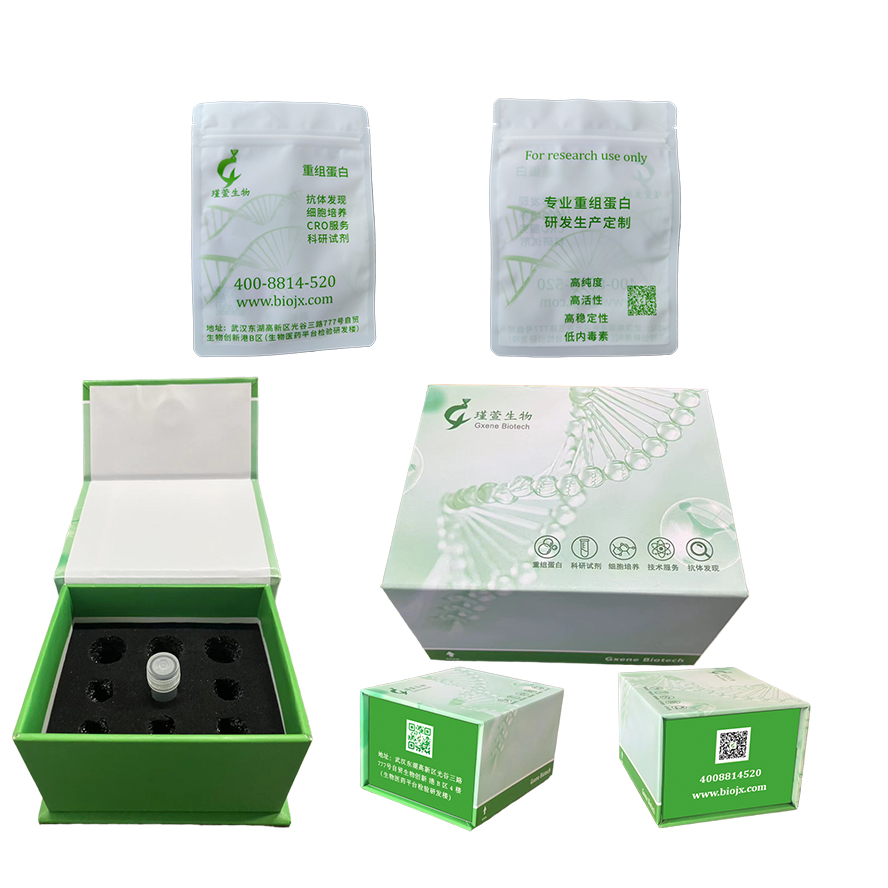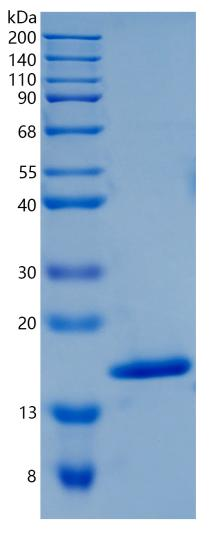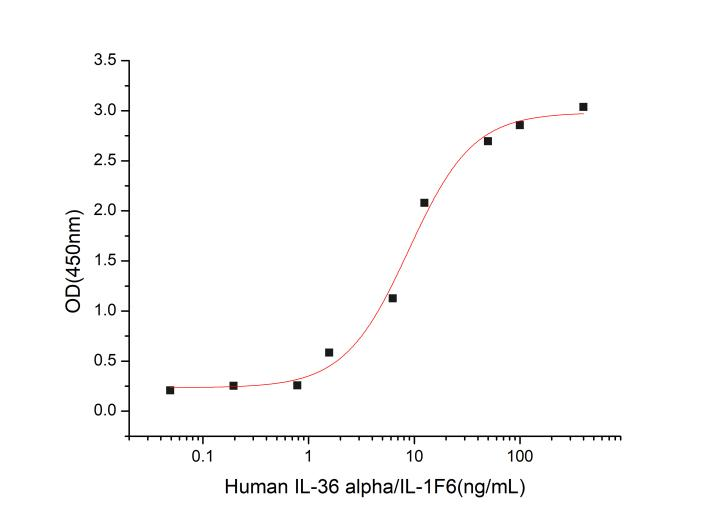




研究方向
IL-36α是IL-36家族的一个亚型,属于IL-1超家族。IL-36 α 在单核细胞、T/B 淋巴细胞、脾脏、骨髓扁桃体、淋巴结和皮肤中表达。IL-36 α 在受损肾脏中表达上调。IL-36 α 与肾脏病变、肝细胞癌以及一些炎症/免疫性疾病(包括结肠炎和牛皮癣)的发生有关。
IL-36 α 在不同物种中存在差异。人 IL-36 α 与小鼠的氨基酸序列同一性<55%。
IL-36α与IL-36R结合并激活NF-κB和MAPK信号通路,从而介导炎症反应。但激活需要中性粒细胞颗粒衍生的蛋白酶(例如组织蛋白酶 G、弹性蛋白酶和蛋白酶-3)进行 N 末端裂解。IL-36 α 还可以结合 IL-1Rrp2 并募集 IL-1RAcP。IL-36 α 通过 IL-36R/IL-1RAcP激活 MAPK、Erk1/2 和 JNK。
IL-36 α是一种促炎因子。IL-36 α 通过激活 NF-κB 和 MAPK 信号通路介导炎症反应。
Measured by its ability to induce IL-8 secretion in A431 human epithelial carcinoma cells. The ED50 for this effect is 4-24 ng/mL.
Interleukin-1 family member 6 (IL-1F6), also known as interleukin 36, alpha (IL36A), is a pro-inflammatory cytokine which plays an important role in innate and adaptive immunity.IL-1F6 can activate NF-kappa-B and MAPK signaling pathways to generate an inflammatory response. The encoded protein functions primarily in skin and demonstrates increased expression in psoriasis. In addition, decreased expression of this protein has been linked to a poor prognosis in both hepatocellular carcinoma and colorectal cancer patients.